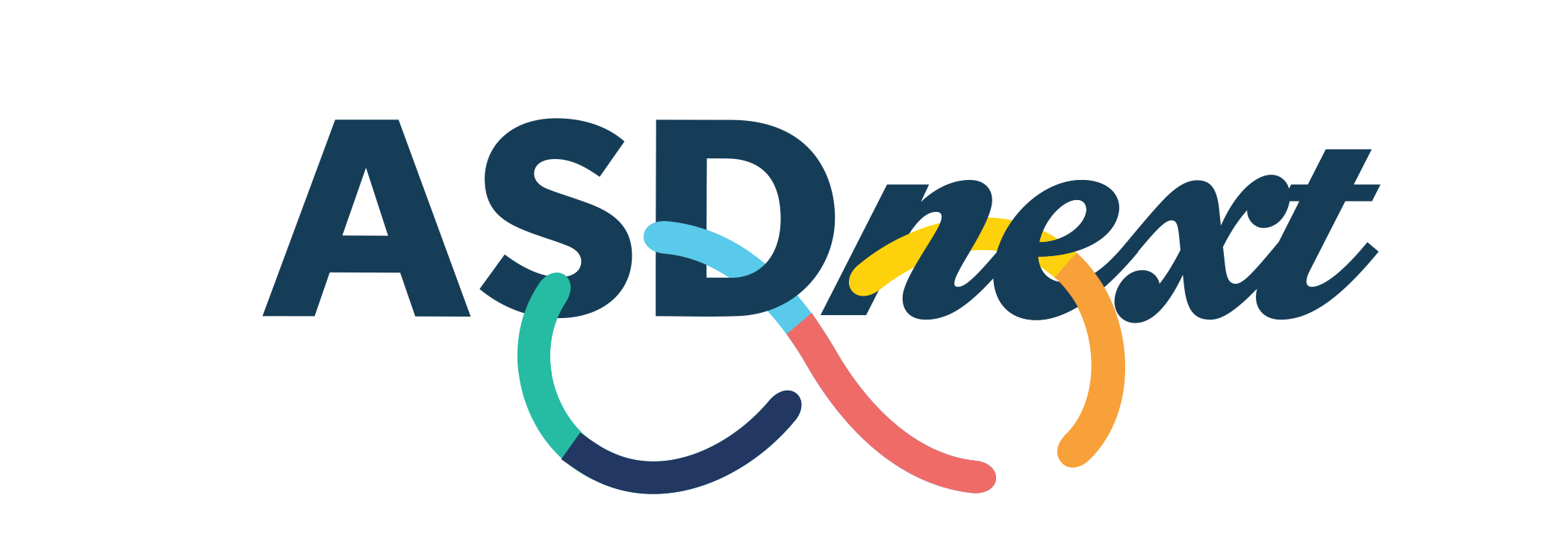Positive Approaches Journal, Volume 13, Issue 4
McLean | 36-43

Volume 13 ► Issue 4 ► March 2025
Voices of Suicide
Heather McLean
Suicide is one of the leading causes of death locally, nationally, and internationally. Suicide rates have increased by 2.6% from 2021 to 2022. According to the Centers for Disease Control and Prevention (CDC)1, 2022 statistics recorded the highest rates of suicides ever recorded in history. In 2022, 49,449 people died by suicide in the United States. On average, we lose 130 people to suicides every day in America. Suicide is the third leading cause of death for ages 10-24. Suicide has been referred to as the “silent epidemic” due to the stigma associated with suicide and mental health. The stigma with mental illness and suicide has created a barrier for people to reach out for help and to let others know they are struggling.
As a society, there was a time when we would only whisper the word cancer. The word cancer was associated with shame and embarrassment. When it comes to talking about cancer, we have come a long way in realizing we aren’t going to cause cancer or make it worse by talking about it. The pink ribbons have become synonymous with breast cancer, people raise lots of money for cancer research via social media and we openly discuss health habits and behaviors to try and prevent cancer. We should feel the same about suicide. Unfortunately, we have a long way to go with our comfort level in discussing and accepting mental health-related issues, especially suicide.
According to the CDC WONDER2 report released in August of 2023, 12.3 million adults seriously thought about suicide, 3.5 million adults made a plan, and 1.7 million adults attempted suicide in 2021. Suicide rates among males continue to be four times higher than the rates among females. Males make up 50% of the population, but nearly 80% of the suicides. Firearms continue to be the most common method used in suicides. Nationally and locally, firearms are used in more than 50% of suicides according to the CDC and 2022 Westmoreland County Coroner’s Report.3
The aging population are at an exceptionally high risk of suicide. According to the 2022 Westmoreland County Coroner’s Report,3 suicides increased over 100% from 2021 to 2022 in the aging population. Some of the well-known risk factors in the aging population are the loss of a major relationship, particularly a spouse. Loss of mobility/loss of freedom due to loss of mobility and the onset of medical conditions or diagnosis of a terminal illness can be very big factors. The aging often feel that they have become a burden to others. Changes in medical conditions can be directly linked to depression. Often at a medical checkup, emotional issues are rarely addressed, leaving undiagnosed mental health concerns. Due to medical changes experienced by the aging, feelings of burdensomeness can put them at a very high risk for suicide.
The recent suicides over the last several years of some high-profile people like Robin Williams and Twitch have brought more attention to the suicide crisis in our country. According to the CDC2, we are currently losing about 130 people to suicide every day. Even though people are talking more about suicide than ever, we still have a lot of work to do. Suicide continues to be a national health care epidemic across the lifespan.
What is left behind in the aftermath of a suicide is a trail of broken hearts filled with many unanswered questions. Loved ones that are left behind grieving are called suicide loss survivors. It is said that between 48 million and 50 million people are thought to experience suicide bereavement every year.4 A suicide loss survivor is at a four times higher risk of dying by suicide. It also increases the risk of depression and feelings of guilt, shame, and rejection. Suicide loss survivors are also at a greater risk for increased psychiatric needs and interpersonal disruptions and isolation. All these risks are higher in Suicide Loss Survivors than in any other traumatic kind of death.
The voices of suicide span across many facets of life. From the voice of the attempt survivor to the voice of a loss survivor. From a treatment perspective of the mental health provider to the professionals responding to suicide. They all have a voice. Are we listening? Attempt survivors and loss survivors are sharing their stories. They are writing books, doing podcasts, and using social media as a platform.
There is power in sharing your story. It is a framework centered through heartache and resilience. Mental Health Professionals are now listening to people with lived experience and finding great insight from the stories being shared. We are learning from every story to help prevent future suicides and to comfort the grieving. Coping with such a profound loss is unique to every person. Survivors of suicide are not alone in their grief. Ray of Hope, Westmoreland County Suicide Prevention and Awareness5 in partnership with Mental Health America of southwestern PA6 hosts a monthly support group called Loved Ones Stolen by Suicide (LOSS). This support group is facilitated by three long-term suicide loss survivors. The group allows for sharing, support, and encouragement for anyone who has experienced the profound grief of losing a loved one to suicide.
Ray of Hope also hosts a suicide attempt survivor’s support group called Hope and Healing, finding hope and support for those recovering from a suicide attempt. There are very few support groups for suicide attempt survivors. This is a safe place to talk openly about suicide. Being able to share your attempt story can bring a sense of relief. This group offers a way for people to express their feelings that suicidal thoughts exist. It is okay to have times where we feel overwhelmed, and that suicide may feel like the only way out. Sharing these feeling can open the conversation for people who are feeling alone and feel that no one understands. They realize they are not alone, and many people do relate to how they are feeling. This brings hope and connectedness. Connectedness is the biggest protective factor against suicide.
Suicide Awareness and Prevention Education for first responders, medical personnel, and mental health care providers needs to become a common thread of lifesaving measures intertwined in the trainings they receive. Only 10% of mental health professionals are competent to deal with a suicidal crisis, and those are the experts we go to in a crisis.7
Ray of Hope provides free suicide awareness and prevention trainings called QPR. QPR stands for Question, Persuade, and Refer. QPR is an internationally recognized evidence-based suicide awareness and prevention training for anyone8. These trainings are offered to anyone in Westmoreland County at no cost to the attendee. QPR teaches how to ask the suicide question, how to encourage/persuade someone to get help, and know where to refer a person to the needed resources. Using QPR can save a life. More information can be found at The QPR Institute.
The Ray of Hope, in partnership with the Westmoreland County Coroner’s Office3, has started a LOSS Team. Their mission is to make connections and instill hope in those grieving the suicide loss of a loved one by providing support, comfort, and needed resources. The team is made up of community members and suicide loss survivors trained to reach out to newly bereaved suicide loss survivors. This postvention response is also prevention for the newly bereaved loss survivors.
The LOSS Team model was developed by Dr. Frank Campbell at the Baton Rouge Crisis Trauma Center in 1998. The key to a LOSS Team is the connection made by a shared experience of a suicide loss. This creates an installation of hope, practical support, and connection to resources. The Ray of Hope, in partnership with the Westmoreland County BH/DS Office, invited Dr. Campbell to Westmoreland County in October of 2022 to provide a LOSS Teams training. That training began the journey to forming the county’s LOSS Team. Westmoreland County is the 2nd county to have a LOSS Team in Pennsylvania.
The Ray of Hope looks for opportunities for people affected by suicide to share their stories. They held their annual conference November 17, 2023. The theme was “Sharing Saves Lives, The Power in Your Story.” The keynote speaker was an attempt survivor and published author who shared his story of hope and resilience. The afternoon consisted of an attempt survivor panel that shared their lived experiences through the journey of their suicide attempt and finding hope and connection.
Recently, the Westmoreland County Behavioral Health Disability Services Office received a grant from the Pennsylvania Department of Human Services Office of Mental Health and Substance Abuse to provide specialized trainings to mental health professionals to enhance efforts in managing suicide risk by partnering with other organizations and first responders. This training is called CAMS-care (Collaborative Assessment and Management of Suicidality)9. This training will allow Certified Suicide Prevention Specialists to respond to different levels of crisis response within the first responder system and greatly enhance our efforts to save lives. CAMS care is an evidence based, suicide focused treatment framework backed by 30 years of clinical research and six published randomized controlled trials. Giving providers tools to enhance their scope of practice is extremely important. This training will allow for 50 individuals in Westmoreland County to become Certified Suicide Prevention Specialists. Information can be found at CAMS Care.
In Westmoreland County, the voices of suicide are being heard. Through our awareness and prevention efforts, education, support groups, LOSS Team, and other community events, lives are being saved. Stories are being shared. People are getting connected and finding hope. The voices of suicide are many. Their stories are still being written.
Westmoreland County has many resources to support our communities and those struggling with a mental health crisis. Westmoreland Community Action runs our local crisis hotline. The hotline answers calls 24 hours a day, seven days a week. They also have a mobile team that provides assessments based on the level of need of the caller. They can be reached by dialing 1-800-836-6010. A national resource is also available for immediate assistance. The 988 Suicide & Crisis Lifeline10 provides free and confidential emotional support to people in suicidal crisis or emotional distress 24 hours a day, seven days a week, across the United States and its territories. If you or anyone you know is in a mental health crisis or in need of emotional support, there are a lot of resources available. The Westmoreland County Behavioral Health Disability Services (BH/DS) Office has a list of local providers. They can be reached at (724) 830-3617 or on the Westmoreland County Website3. It is important to remember that there is hope, there is help, and you are not alone in your struggles.
References
1. Centers for Disease Control and Prevention. 2025. Centers for Disease Control and Prevention Website .
2. Centers for Disease Control and Prevention WONDER Online Databases. 2025. Centers for Disease Control and Prevention WONDER Online Databases.
3. Westmoreland County Coroner. Westmoreland County Website.
4. Pitman A, Osborn D, King M, Erlangsen A. Effects of suicide bereavement on mental health and suicide risk. Lancet Psychiatry. 2014 Jun;1(1):86-94. doi: 10.1016/S2215-0366(14)70224-X. Epub 2014 Jun 4. PMID: 26360405.
5. Ray of Hope Westmoreland. 2024. Ray of Hope.
6. Mental Health America of Southwestern PA. 2020. Mental Health America of Southwestern PA.
7. Aschwanden, C. Suicide attempt survivors seek a voice in helping others at risk. July 2014. Suicide Attempt Survivors Seek A Voice In Helping Others At Risk Article.
8. Question Persuade Refer Institute. The QPR Institute.
9. The Collaborative Assessment and Management of Suicidality. 2025. The Collaborative Assessment and Management of Suicidality Framework.
10. 988 Lifeline. 2025. 988 Lifeline Website.
Biographies
Heather
Mclean began
her career working in the mental health field 23+ years ago. Heather has been
employed at MHA-SWPA since 2019 as their Outreach Coordinator. As part of her
position as the Outreach Coordinator, Heather participates on numerous
committees and boards. These committees include Ray of Hope Westmoreland County
Suicide Awareness & Prevention Task force, CSAY-Counsel for Substance Abuse
& Youth, HAWC-Hoarding Alliance of Westmorland County, and Steering
Committee member for the Southwest Regional CIT Program. Heather currently
holds an officer position on the state board of SPA-Suicide Prevention Alliance
and on the Board and of Directors of Greater Things Ministries and Fight the
Blight. Heather also works closely with the Westmoreland County BH/DS office
coordinating lots of trainings and events. Heather has worked in suicide prevention
since 2009. She has served as the Ray of Hope Chair since 2016. Her
responsibilities include the oversight of 80+ task force members, multiple
sub-committees, supervision of the task force coordinator, and Lead of the
newly formed L.O.S.S. Team (Local Outreach to Suicide Survivors). Heather also
facilitates the Hope & Healing support group for those recovering from a
suicide attempt. Heather is the Westmorland County EBH (Emergency Behavioral
Health) Coordinator that aids in the emotional response following a traumatic
event. Heather is a certified QPR Gatekeeper Instructor, Certified CIT (Crisis
Intervention Team) Coordinator, Certified YMHFA (Youth Mental Health First Aid)
Instructor, Certified Bridges out of Poverty Instructor, and ASIST (Applied
Suicide Intervention Skills Training) Trainer. Heather provides many trainings
to schools, colleges/universities, community/social service agencies,
businesses, medical personnel/first responders, and faith-based organizations. Heather
is a 2002 honors graduate from Point Park University where she received her Bachelor
of Science degree in criminology/criminal rehabilitation. Prior to that she
attended Westmoreland Community College where she received an associate’s degree
in legal assisting/paralegal in 2000. Heather likes to spend free time
mentoring youth at The Father’s Heart Ministries. She also stays busy loving
her two dogs, two children, and husband Troy.
Contact Information
Heather J. McLean
MHA-SWPA/Outreach Coordinator
Westmoreland County EBH Coordinator
Ray of Hope Task Force-Chair
409 Coulter Ave, Greensburg Pa, 15601
Phone: 724-834-6351 Ext. 126
Cell: 724-433-1359
Email: hmclean@mhaswpa.org



